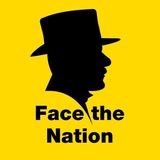Henry Ford was born on a farm family in Dearborn, Michigan. Henry himself did not like farming, but he did like fooling around with machines. Henry liked to fix all the farm machines, and he was known around the area to be a handyman. So as a youth Henry fixed various machines for surrounding farmers. This hobby of Henry's made his father angry, he would neglect all of his farm chores.
When he was 16, Henry left to work in nearby Detroit as an apprentice machinist. After completing his apprenticeship in 1882 he returned to his father's farm. A neighbor, John Gleason, paid him $3 a day to operate a small portable steam engine that cut corn, ground feed, and sawed wood. Ford's ability came to the attention of the district representative of the Westinghouse Engine Company of Schenectady, New York, and he was hired late in the summer of 1882 to travel throughout southern Michigan setting up and servicing Westinghouse steam traction engines.
In 1913 Henry Ford began searching for that little steam-engine. All he knew was its number, 345. After a long hunt it was found on a farm in Pennsylvania, rusty with disuse. The number plate was found in the farmhouse kitchen, used as a patch on an old cookstove. The farmer wanted ten dollars for the worthless thresher. Ford paid it and gave him a new Model T as a bonus; and he threshed again with the old steam-engine in Dearborn on his sixtieth birthday
@facethenation
When he was 16, Henry left to work in nearby Detroit as an apprentice machinist. After completing his apprenticeship in 1882 he returned to his father's farm. A neighbor, John Gleason, paid him $3 a day to operate a small portable steam engine that cut corn, ground feed, and sawed wood. Ford's ability came to the attention of the district representative of the Westinghouse Engine Company of Schenectady, New York, and he was hired late in the summer of 1882 to travel throughout southern Michigan setting up and servicing Westinghouse steam traction engines.
In 1913 Henry Ford began searching for that little steam-engine. All he knew was its number, 345. After a long hunt it was found on a farm in Pennsylvania, rusty with disuse. The number plate was found in the farmhouse kitchen, used as a patch on an old cookstove. The farmer wanted ten dollars for the worthless thresher. Ford paid it and gave him a new Model T as a bonus; and he threshed again with the old steam-engine in Dearborn on his sixtieth birthday
@facethenation
This media is not supported in your browser
VIEW IN TELEGRAM
Henry Ford with Westinghouse Steam Engine No. 345 in Dearborn on his sixtieth birthday
@facethenation
@facethenation
General Eisenhower speaks with the 101st Airborne Division just before they board their planes to participate in the first assault of the Normandy invasion on June 5, 1944 @facethenation
This media is not supported in your browser
VIEW IN TELEGRAM
Eisenhower, giving the final order for D-day, the assault on Nazi-occupied France. It was the beginning of a campaign of of liberation of Europe from nazi tyranny
@facethenation
@facethenation
The lumberjacks of the 1800s performed their difficult and dangerous work without any of the conveniences of modern technology. They used axes and long, flexible saws known as "misery whips". Daily pay of around $1.25 and tools such as steel wedges, sledgehammers, and log-moving tools, made logging a perilous and underpaid profession.
Up until the 1880s, lumberjacks felled trees with axes. Lumberjacks used two types of axes: a single-bitted or single-headed axe and a double-bitted axe. Some loggers believed the double-bitted axe to be a dangerous choice, and preferred to use two single-bitted axes instead. They would use one axe to get through the bark and the second for the tree itself.
@facethenation
Up until the 1880s, lumberjacks felled trees with axes. Lumberjacks used two types of axes: a single-bitted or single-headed axe and a double-bitted axe. Some loggers believed the double-bitted axe to be a dangerous choice, and preferred to use two single-bitted axes instead. They would use one axe to get through the bark and the second for the tree itself.
@facethenation
Lumberjacks undercut a Giant Sequoia tree 25 feet in diameter in Northern California, 1902 @facethenation
President Richard Nixon visits the Apollo 11 astronauts. After returning from the Moon astronauts were quarantined in case they had brought unknown pathogens back to Earth, 1969 @facethenation
This media is not supported in your browser
VIEW IN TELEGRAM
Richard Nixon applauds the returning Apollo 11 astronauts, Neil Armstrong, Michael Collins and Buzz Aldrin
@facethenation
@facethenation
In 1912 Glenn Curtiss developed his famous flying boat and in 1919 his NC4, developed for the US Navy, became the first airplane to cross the Atlantic Ocean @facethenation
British Prime Minister Winston Churchill flashes his trademark ✌️ "V for Victory" @facethenation
This media is not supported in your browser
VIEW IN TELEGRAM
Winston Churchill gets three loud cheers from British troops and replies with "V for Victory" sign during his speech at the Casablanca conference, January 1943
@facethenation
@facethenation
Apollo 16 became the fifth mission to land on the Moon. One of the most exciting things they brought with them was the lunar rover. John Young and Charles Duke drove 16.6 miles total @facethenation
This media is not supported in your browser
VIEW IN TELEGRAM
Lunar rover gets a high-speed workout 🏎 by astronaut John Young in the "Grand Prix" run during the first Apollo 16 extravehicular activity 🌖 on April 21, 1972
@facethenation
@facethenation
